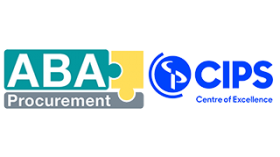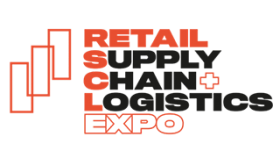The need for skilled procurement professionals in the public sector has never been greater. With increasing pressure on budgets, rising complexity in regulations, and the emphasis on social value, organisations need procurement teams equipped to meet modern challenges. That’s where ABA Procurement steps in.
The risks involved in outsourcing FM

Barry Holt, director of policy & research at the International Institute of Risk & Safety Management discusses the risks and advantages that are associated with outsourcing from a health & safety perspective
Increasingly we are seeing organisations outsourcing activities to third parties, not only those for which we have traditionally looked outside but also many of the core activities of a business. The range of areas outsourced may now include those related to building and service maintenance at one end of the spectrum to financial operations, by way of activities such as IT. While this may make sound sense from a financial and business point of view, most facilities managers - as well as health and safety professionals - are well aware of the risks which use of external contractors can introduce.
In fact, the situation can be complicated further by the way in which there are often several levels of subcontract arrangements. For example, many organisations now outsource the whole of their facilities management function to a specialist contractor. However, the FM contractor will often have to subcontract parts of this operation to another organisation, which in turn may rely on other subcontractors who may be self-employed or agency workers. Some organisations in this supply chain may even outsource their health and safety function. This introduces a particular problem in that, whilst it may be appropriate to have a third party carry out certain duties, the organisation itself still retains overall reasonability whether it realises it or not.
Why do we subcontract?
In the past, organisations have traditionally kept control of those activities which were part of their day-to-day operations. Obviously where specific projects were concerned, such as a new building, plant or machinery, they would go externally. However, we have a growing number of FM specialists who can provide both the hard facilities services such as building maintenance and the soft’ services such as catering. In part this trend has been accelerated by the economic climate in recent years.
Another reason why we have seen this move to the use of more subcontract labour is that it gives organisations more flexibility with regard to the number of workers required at any one time.
It avoids the need for businesses to pay employees when there is no current work or face the alternative of making redundancies with all the problems which this introduces.
Outsourcing also enables an organisation to review, periodically, the way in which a contractor is performing or the needs of the organisation, which may change. The scale to which some organisations now outsource has escalated to the extent where in some industries, such as oil and energy, the majority of workers are subcontractors.
Health and safety issues around subcontractors
Whilst the increased use of subcontractors has significant financial benefits for an organisation, it brings with it considerable problems relating to health and safety. These arise from two main sources, competence and control. As we suggested earlier, some organisations may believe that by outsourcing, they are relieving themselves of their legal responsibilities for health and safety management and that these are passed onto the subcontracting company.
As has been frequently demonstrated, this is not the case – overall responsibility must remain with the company that is doing the outsourcing, although the contracting company will have duties of its own to fulfil. It is important to realise that there is a complex network of duties that must be considered in these circumstances. These include duty of care from the business to for work but was not recognised and when one of the welders struck an arc there was an explosion and fire which killed eight people. Swan Hunter was convicted and fined £3,000.
The company appealed but the original conviction was upheld. The Judge made the comment that ‘Swan Hunter had a duty to ensure the health and safety of its own employees by the provision of information. If the ignorance of another organisations’ employees places its own employees at risk then it is the organisations duty, for the protection of its own employees, to inform the employees of another of any special risks within its knowledge’.
So, what does an organisation need to do to discharge its legal responsibilities for the health and safety of subcontractors working on its business?
Selection process
The organisation must ensure that the subcontractor it selects, and its employees, are competent to carry out the job without causing undue risk to its own and the contractor’s employees, as shown in the Swan Hunter case. What evidence do we need to have to ensure that this is the case? Some of the questions we need to ask are:
- Does the subcontractor have a valid health and safety policy that includes organisational details, arrangements, policies & procedures?
- Have risk assessments been carried out for the activities for which they are being employed?
- Does that subcontractor employ competent health and safety advisers?
- What is the accident experience of the subcontractor?
- Has the subcontractor been prosecuted for breaches of health and safety legislations?
- Have any enforcement notices been issued and for what?
- What health and safety training have employees received?
- If the subcontractor is to carry out specific duties, e.g. food handling, electrical work, etc, do they have evidence of competence?
What the subcontractor cannot be expected to have is knowledge of the specific aspects of its tasks which relate to the place of work, activities and procedures of the employing organisation.
One of the problems of checking this information is that it is time consuming, particularly if several contractors are bidding for the same work; and even where organisations have included health and safety as part of their procurement process, it often deteriorates into a ‘tick box’ exercise.
However, recently schemes have been set up that will provide assurance of a potential subcontractor’s competence. These include the Contractors Health and Safety Assessment Scheme (CHAS) and Achilles. Subcontractors registered with these schemes will have been checked in advance and have met certain standards.
However, many contractors are self-employed or work through an agency. How can we check their competence? One way which is becoming more widely available is the Safety Passport Scheme. This originated with the construction industry, which employs many casual and self-employed workers, but is now spreading into other industries. Details of passport schemes are available from HSE (www.hse.gov.uk/pubns/indg381.pdf). It must be stressed that even if a passport scheme is used, there is still a duty to ensure that the individual contractors coming onto site are made aware of issues relating the site and its activities, such as emergency procedures, particular hazards, etc.
Monitoring and control
Having taken all appropriate steps to ensure that contractors coming onto site are competent and that they have received appropriate site induction, there is a need to ensure that there is effective communication during the period of the contract. This is probably the most common factor in serious incidents, where there is a lack of a common understanding of standards and expectations.
If this is to be achieved, it is necessary that health and safety is seen as everyone’s responsibility and that there should be a means of communicating both good and bad behaviour to those who are in a position to take action, whether to recognise good achievements or to correct actions that are potentially dangerous. In one case of which we are aware, a CEO saw two contractors working on a fl at roof with inadequate fall arrest equipment and PPE. He did not turn away thinking it was the safety manager’s job but immediately stopped work on that activity, before calling the sub-contractor’s director.
Summing up
There are undoubtedly some problems surrounding the outsourcing of activities to subcontractors. These problems have been with us for a long time but are becoming increasingly important as organisations move toward outsourcing a wider range of activities, including those traditionally seen as ‘low risk’.
We need to ensure that we are suitably diligent in selecting our subcontractors and we need to ensure that their activities are carefully monitored.
About the author
Barry Holt is director of policy & research at the International Institute of Risk & Safety Management, which was established in 1975 to advance professional standards in accident prevention and occupational health throughout the world.
Barry has been involved in health and safety for 35 years, providing advice to organisations including major multi-nationals, SMEs, NGOs and Government agencies. He has a degree in metallurgy from Imperial College, London, and is a visiting lecturer in risk and safety management on MSc courses at the Bartlett School of Architecture at University College London and Liverpool John Moore’s University.
Over the last three decades IIRSM has grown from a collective group of UK health and safety professionals to a thriving International Institute spanning over 70 countries.
Further information
www.iirsm.org
This article was first published on facilities-manager.co.uk
Event Diary
Retail Supply Chain & Logistics Expo returns to Excel London across 12-13 November, once again bringing together the world of logistics, supply chain, eCommerce and retail innovation for two dynamic days of opportunity.
Every sport, from grassroots football to world-class tournaments, depends on one constant: high-quality playing surfaces and well-maintained green spaces.
Tickets: Free registration available at www.retailscl.com
The Retail Supply Chain & Logistics Expo is the UK’s leading event for retail supply chain and logistics professionals, showcasing the latest innovations in fulfilment, 3PL, AI-driven automation, and warehouse technology.
Supplier Profiles
Bauder Accepts Keys to its New UK Distribution Centre at Gateway 14
Bauder marked a major milestone in its UK expansion with the official handover of a brand
Words of World: Bridging language barriers with excellence
At Words of World, we specialise in professional translation and interpreting, d
Latest Features
The British Institute of Cleaning Science (BICSc) and the Cleaning & Support Services Association (CSSA) have successfully completed a groundbreaking project aimed at exploring the future of cleaning. This collaboration marks a significant milestone in the cleaning industry, reflecting a shared commitment to embracing innovation with confidence.
The Crown Commercial Service’s (CCS) new framework on Language Services (RM6302), dealing with translation, transcription and interpreting, is live, running from 7th May 2025 to 6th May 2028.










